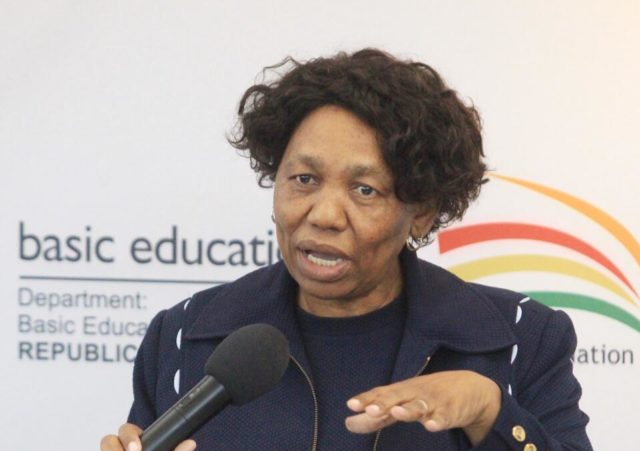Basic Education Minister Angie Motshekga’s explanation regarding the huge difference between the number of pupils who entered Grade 1 in 2009 and the cohort that wrote matric 12 years later has left many confused
A “SIGNIFICANT” number of school drop-outs who started Grade 1 with the cohort that wrote the matric exam last year have entered the world of work.
This is according to Basic Education Minister Angie Motshekga, who sought to explain the huge difference between the number of pupils who entered Grade 1 in 2009 and the cohort that wrote matric 12 years later.
Motshekga revealed in a written reply to a parliamentary question that, “according to our national records”, 1,106,827 pupils enrolled for Grade 1 in 2009.
Of these, 578,468 sat for the 2020 matric exam as full-time candidates. A total of 440,702 passed and obtained the critical matric certificate.
These figures were the basis of the criticism that the actual matric pass rate was way lower than the 76.2% Motshekga proclaimed.
Critics maintained that the “real” matric pass rate was as low as 44%.
In her parliamentary reply, Motshekga sought to cast doubt on the exact number of pupils who started school in 2009. This was despite the fact that she provided the 1,,106 827 figure.
“It needs to be noted that this figure includes learners who repeated Grade 1; and therefore, the number of learners who entered Grade 1 in 2009, will be slightly lower,” Motshekga said.
She ventured into explaining what happened to the rest of the learners who could not reach Grade 12.
Of her five explanations, the first was that 30,000 matrics who registered as full-time candidates in 2020 were absent for the examinations.
Second, Motshekga said, “a large number of learners would have failed in one of the earlier grades; and thus, would be retained in the system as repeaters”.
Third, “a large number of learners would have left the schooling system in Grade 10, 11; and registered at TVET Colleges”.
Motshekga’s fourth explanation was that “a significant number of learners would have entered the world of work”.
Her final explanation was that another large number of this cohort registered to write the final matric exams as part-time candidates.
A total of 117,808 youths wrote as part-time candidates last year.
Part-time candidates sat for fewer subjects than full-time candidates and their performance in the exams was announced later in the year.
Motshekga’s assertion that a significant number of school drop-outs entered the world of work appeared to fly in the face of the country’s 32.5% unemployment rate.
Statistics South Africa’s data showed that unemployment was even higher among citizens without matric.
The latest Quarterly Labour Force Survey revealed that of the 7.2 million unemployed people, “as many as 52.3% had education levels below matric”.
Those with matric were the second most unemployed individuals, with a 37.9% unemployment rate.
“Only 1.8% of unemployed persons were graduates, while 7.5% had other tertiary qualifications as their highest level of education,” said the Stats SA survey.








